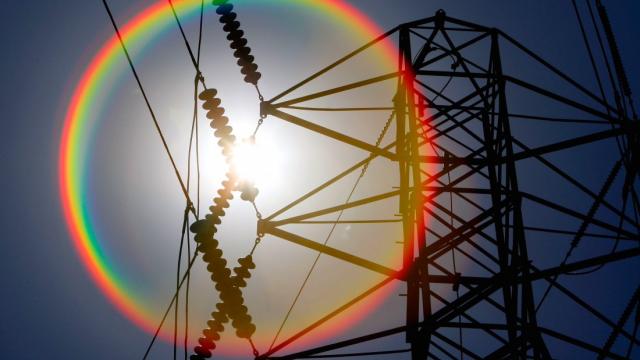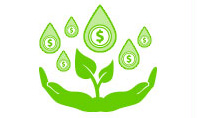
The West Coast of North America is home to two globally significant models for carbon pollution limits: California has the continent’s first carbon cap-and-trade covering the entire economy, and British Columbia charges a carbon tax, and fully recycles the revenues back to citizens via tax reductions and low income credits.
Last month, Washington Gov. Jay Inslee made a cap-and-trade proposal to the 2015 legislature. This is part of an effort to close the gap between California and BC, creating a unified West Coast climate policy block along with Oregon. A carbon policy might be sent to the Oregon legislature in 2016.
The effort stems from a commitment by the Pacific Coast Collaborative made up of West Coast states and provinces. In 2013, the four leaders of those jurisdictions recommitted to enacting climate policies along the coast. One idea behind this "West Coast Agenda" is that solidifying the world’s fifth largest economy around carbon policy will kickstart action at a national level. The governor's proposal notwithstanding, any policy design adopted in Washington is ultimately more likely to look north to BC than south to California.
Overall, it strains belief to imagine that anything will spur the U.S. Congress to place limits on carbon pollution soon, let alone action in two of the greenest states in the Union. Congressional passage would require both houses solidly returned to the Democrats or a policy revolution in the Republican Party (perhaps a “grand bargain” achieved by a President Jeb Bush to cut the deficit using carbon revenues).
The more likely scenario is that passage of carbon policy by the Northwest states will spur continued bottom-up action in states, provinces and cities across North America. This is an independently valid rationale for acting here in Cascadia. Any policy we adopt here will have ramifications beyond the bioregion. Regional politics is tilting the outcome toward a revenue-neutral carbon tax.
To understand why, begin with the attitude of most climate-concerned people in Washington and Oregon. It can be summed up easily: Give me a climate policy, anything that makes a dent. People understand that any climate policy that can be enacted now will fall short of the radical carbon pollution reductions needed to ensure climate stability. They know that a full response to climate disruption will require a massive national and global agenda to advance clean energy technologies. What they are seeking at the state level is a stake in the ground to begin the process, something that begins to significantly reduce our own carbon emissions.
While there is a vociferous debate over cap-and-trade vs. carbon tax among policy wonks, people will set aside their differences and support either if there is a solid chance for enactment. The sense of urgency to limit carbon pollution trumps arguments over the best way to set those limits.
At this point two proposals are on the table in Washington state – Gov. Inslee’s cap-and-trade and a BC-style revenue-neutral carbon tax forwarded by Carbon Washington. Revenue neutral means all carbon revenues are recycled back to citizens rather than being spent by government.
The governor prefers the certainty of an emissions-based goal, and would like to line up with the California system. Only a fixed amount of carbon pollution would be permitted each year. That amount would decline over time to meet binding state carbon limits. Polluters would have to secure permits to emit carbon by buying them in an auction. Polluters who reduce carbon emissions more deeply than required would be able to gain credit for those reductions in a trading market.
Economists tend to advocate outright taxes on carbon, a price-based policy. Prices set by law rather than auction send a more predictable signal, thus providing greater certainty for carbon-reducing investments including energy efficiency and renewable energy. The climate grassroots also tends to support carbon taxes because of the vulnerability of carbon trading markets to manipulation much as housing and energy markets have been. This potential for financial shenanigans is acknowledged by the governor’s own Carbon Emissions Reduction Taskforce, though cap-and-trade advocates maintain that gaming can be prevented with a properly designed market.
Whatever qualms people might have about cap-and-trade, the governor’s plan is drawing broad support from climate-concerned Washingtonians. They want to see something enacted. Give me a climate policy, they say, anything that makes a dent.
That is true, even though the Inslee proposal feeds another criticism made by advocates for revenue-neutral systems: that given a new source of revenues, politicians will spend it however they please. Anyone who reads my climate policy commentaries knows that I disagree with revenue-neutral schemes, and believe revenues should be spent largely on carbon-reducing investments. The governor’s plan, though not revenue-neutral, does not do this.
The governor would leverage the carbon market to solve long-term deficits in transportation and education funding. The Washington carbon permits auction is expected to yield around $1 billion annually. The governor proposes to spend much of this to catch up on a transportation maintenance backlog and a court-mandated improvement in education spending. In other words, the lion’s share of carbon revenues would go to activities that do not directly reduce carbon pollution.
While the transportation piece includes money for low-carbon options such as transit and electric vehicles, most goes for highway upkeep. The plan bars spending on expanded road capacity but frees up gas tax revenues to do exactly that. The low-income portion includes $100 million to fund a working families tax credit for the poorest 450,000 families in the state, and affordable housing assistance. This is meant to balance the impact of higher fuel and utility bills on the bottom end of the income spectrum.
(Though it leaves out many working and middle class families that are also suffering economic stress from long-term income stagnation, creating potential for opponents to wedge off traditional progressive constituencies that might otherwise support climate policy. The CarbonWA proposal is less vulnerable in this regard. It offers a similar tax credit plus shaving one percent off the sales tax.)
Inslee faces a tough uphill slog moving his package through the legislature. He can likely secure passage in the Democratic-controlled House, even with a diminished majority after the November election. But failure to flip the Senate back from Republican control, despite major campaign funding by California billionaire Tom Steyer and other high-net worth contributors, guarantees a stony reception in that chamber. Early reactions from key Senate Republicans have been unfavorable. Inslee appears to be betting that the urgent need to solve education and transportation funding challenges will move enough Republicans to support his proposal. But Republicans are even less likely to approve carbon fees on major industries than tax increases on individuals. Major industries are their campaign contributors.
Despite any concerns over cap-and-trade policy design or spending revenues on roads and general fund obligations, the climate and environmental community has greeted the governor’s plan with enthusiastic support. This demonstrates a deep hunger for carbon limits of any sort. However, if the governor cannot pull one out of a hat and his package stalls, that same hunger will attach to CarbonWA’s proposal. The momentum created by the campaign for the governor’s cap-and-trade will transmit to CarbonWA’s BC-style carbon tax.
Give me a climate policy. Anything that makes a dent.
In March, CarbonWA plans to introduce an initiative to the legislature to enact its proposal. That sets off a process of signature gathering. CarbonWA intends to put funds into this. It will not be a total volunteer effort. So between funding and citizen enthusiasm, there is a realistic possibility that the 250,000-signature target will be reached. If CarbonWA is successful the legislature in January 2016 will have three options: Enact the proposal, send it to the November ballot, or send it to the November ballot with a proposal of its own.
That could be a cap-and-trade, though the general reaction is that putting such a complex measure before voters is daft. It could be a carbon tax to fund education much as Rep. Joe Fitzgibbon has proposed. The prospect of competing initiatives raises concerns, but it would make an interesting debate.
While I am not as in touch with Oregon politics, it's safe to say that if there is major momentum for a carbon tax north of the river it will resonate south. As in Washington the Oregon grassroots tilts toward carbon tax over cap-and-trade. Oregon Climate is already building support for a revenue-neutral carbon fee in the Beaver State.
What is clear is that if the Inslee climate package bogs down in the Washington Senate the climate grassroots will not wait for legislative action in some future session (such as 2017 with a more favorable Senate line-up). The political system has repeatedly failed to deliver meaningful climate policy, whether it was the Washington state carbon cap enacted without teeth in 2008 or a federal climate bill that didn’t make it at all in 2010. In 2015 people are out of patience. If the system fails to deliver this time citizens will take climate leadership into their own hands. Grassroots activists will go to the streets, gather signatures and seek a 2016 ballot spot.
As the only climate policy game in town this will represent a fait accompli forcing the hand of political leaders, major funders and professional advocacy groups. They will have to decide whether to support the measure or risk letting a major climate policy initiative fail, either by not gathering enough signatures in 2015 or votes in 2016. Have no doubt that fossil fuel interests will weigh in heavily against the measure. They spent a mind-boggling $721 million in the 2014 election cycle.
Gov. Inslee is making a bet that the need to fund education and transportation is so compelling that he can swing Republican support to a carbon pollution cap. He may be able to do this, and more power to him if he can. But if he can’t, leadership and momentum move from Olympia to the grassroots, to CarbonWA’s BC-style carbon tax. If it does I’ll be right there, any quibbles over revenue-neutral notwithstanding.
Give me a climate policy. Anything that makes a dent.
3 WAYS TO SHOW YOUR SUPPORT
- Log in to post comments













